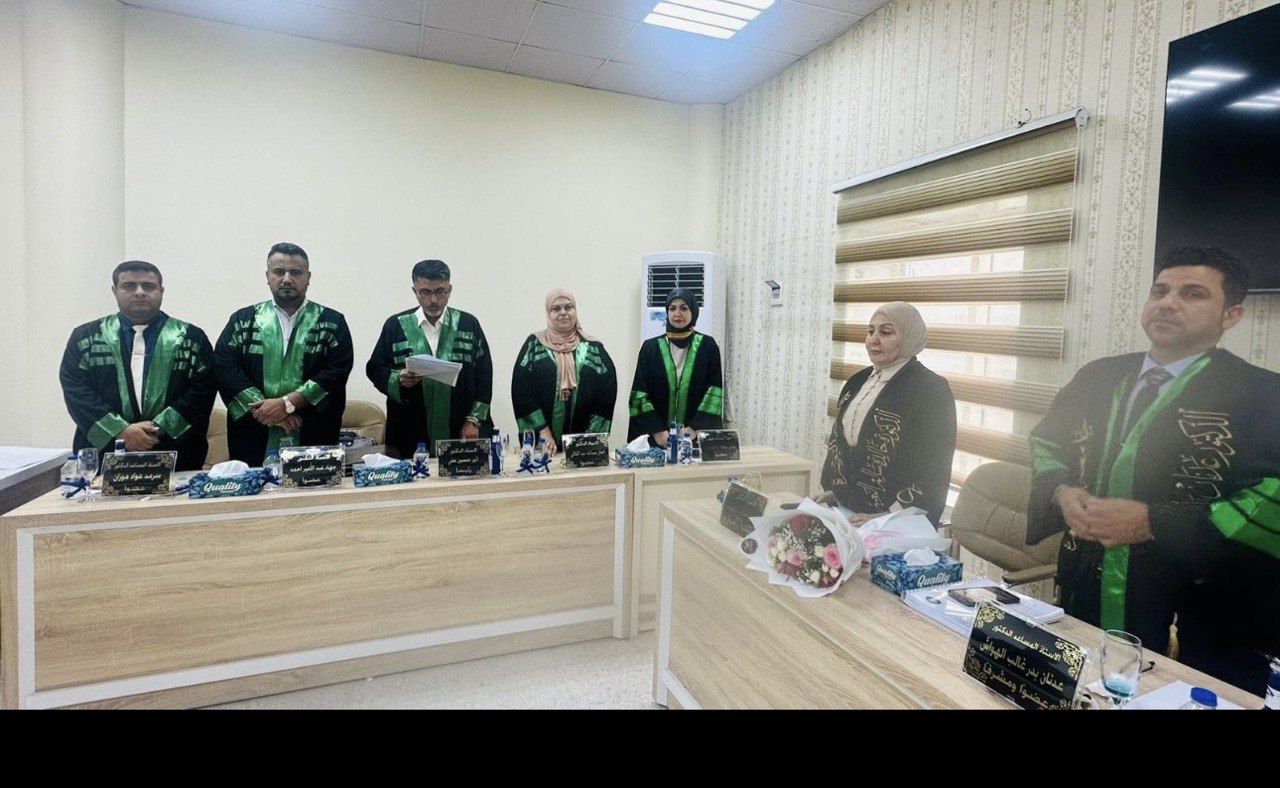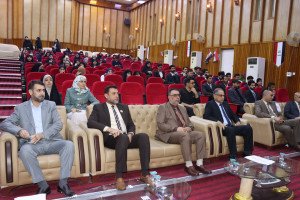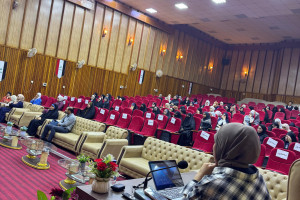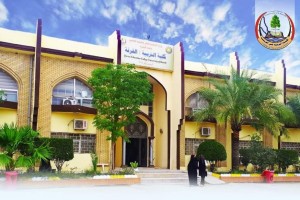




The teaching staff at the Qurna College of Education at the University of Basra, Head of the Department of Life Sciences, Assistant Professor Dr. Adnan Badr Ghaleb Al-Hawash, participated as a member and supervisor in the committee discussing a doctoral thesis in the College of Agriculture, Department of Fish and Marine Resources. University of Basra for the thesis tagged “The effect of pathogenic bacteria on antioxidants in Nile tilapia Oreochromis niloticus (L., 1758) and common carp Cyprinus carpio L., 1758”
The thesis of the student, Nadia Ali Hussein, supervised by Prof. Dr. Khaleda Salem Al-Naeem and Prof. Adnan Badr Ghaleb Al-Hawash / College of Education - Qurna, included the effectiveness of antioxidant enzymes in fish, which is the key to their immune response to bacterial infection. This infection has a significant impact on fish tissues through the secretion of toxins, especially bacterial infections transmitted between animals and humans.
The researcher added that normal cellular functions in the fish body require low levels of reactive oxygen species (ROS), which participate in signal transmission within cells, regulation of gene expression, and host defense against disease-causing infections. Therefore, the comprehensive accumulation of ROS may lead to Non-specific damage to proteins, lipids and nucleic acids and is associated with various diseases, so the balance between the production of reactive oxygen species and their elimination is one of the most important issues.
The researcher also showed that the cell responds immunologically to maintain its normal function, and these responses include: secretion of important antioxidant enzymes that stimulate important pathways - and among these enzymes that the current study focused on are: Glutathione peroxidase (GPX), Superoxide dismutase (SOD), ( Catalase(CAT)
The researcher concluded that there was a bacterial diversity of Gram-negative species in common carp and Nile tilapia, and the most widespread bacteria was Aeromonas hydrophila. The activity responses of the fish were different in response to the activity of enzymatic antioxidant activity. As for gene expression levels, both types of fish showed a response to gene transcription, but The response was twofold in Nile tilapia to reduce reactive oxygen species under conditions of oxidative stress to maintain antioxidant gene expression levels.
This study is considered the first of its kind in Iraq that showed the role of immune defenses for enzymatic antioxidants and the level of their gene expression in common carp and Nile tilapia, and their important role in immune defense against oxidative stress. Despite the lack of genetic information for tilapia fish that was not available, this study will also provide Important information about these fish. These results will also contribute to further understanding of pathogenicity and the host defense system in fish after bacterial infection.
The researcher recommended:
1. Conducting many studies on the relationship between types of diseases and oxidative stress in fish, which are currently limited. The results presented will help facilitate future studies on the mechanisms behind the effects of pathogenicity on fish immunity.
2. Investigating the role of genes, as these small molecules that mimic the level of gene expression have become important future studies.
3. Advanced technologies support the investigation of disease epidemics and help determine the origins of an outbreak or the presence of an infection, so genetic techniques can be used frequently in the search for better ways to identify and manage fish infections and to understand the spread of infectious diseases in fish.







